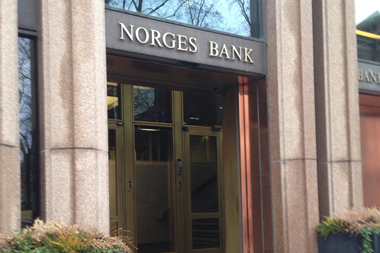A research paper entitled ‘The SRI Performance Paradox - How to Gauge and Measure the Extra-Financial Performance of Socially Responsible Investment’ by Christoph Butz (pictured right) and Olivier Pictet of Pictet Asset Management (PAM), suggests that extra-financial returns should be taken into account by investors after quantifying environmental and social returns in a socially responsible investment (SRI) equity portfolio.
The report shows that an optimised SRI global equity portfolio would produce 40% fewer CO2 emissions than a conventional portfolio indexed to the MSCI World.
The report also illustrates the positive social impact of such a portfolio. In terms of job creation, an optimised SRI portfolio for 2007 would have stood at +4.2% compared to the benchmark job growth of 2.7%.
PAM published the study because it has around €2bn invested within the scope of broadly diversified SRI portfolios. “The paradox is that although a lot of expensive efforts are undertaken to probe companies for environmental, social and corporate governance criteria, in the end all that matters and is reported is the financial performance,” he says.
“Our institutional clients also want to show their members whether their original SRI targets have been achieved through such an investment style. And to quantify this extra-financial performance, we estimated for each company in the portfolio the environmental and social impact in terms of CO2 emissions and job creation.”
Pictet focused on emissions and jobs because they are easy to measure unlike, for example, management quality, which is only gaugeable on a subjective basis. “Emissions are also linked to energy consumption, which is often the single most important environmental impact of a company,” Butz says. “And while there are certainly many social factors, only a few are macro-economically important and can be measured objectively.”
The environmental impact of each portfolio investment is expressed in terms of annual carbon emissions, in other words tonnes of CO2 per $1m (€650,000) of investment, via an environmental assessment method called envImpact developed jointly by Pictet and its long-term SRI research provider Centre Info.
EnvImpact claims to add up all the direct and indirect CO2 emissions in the production cycle based on a detailed economic input-output analysis.
They will then be divided by the company’s turnover to determine the carbon intensity per unit of revenue (CIU). “We have to be careful to eliminate double-counting. For instance, emissions from cars during use by other companies that are themselves analysed for their CIUs, should be subtracted. This procedure even widens the emissions reduction ratio between the portfolio and the benchmark from 35% to 40%,” Butz says.
The active social return is calculated by multiplying the annual job growth - in absolute or percentage terms - by the active weight of the respective company in Pictet’s sustainable portfolio. At the beginning of the period, companies likely to create more jobs are identified based on a seven-year moving average of past job creation and are overweighted in the portfolio. Then after one year, the actual job creation is measured and compared with the investment universe to determine the active social return on the sustainable portfolio.
Pictet began by measuring emissions in 2005, which was followed in 2006 by the counting of jobs created, meaning that 2007 was the first year in which all numbers were implemented for Pictet clients.
“The study found that companies in a sustainable portfolio deliver more extra-financial returns for investors than their conventional peers. In the end it is the investor’s decision how he weights the three dimensions - environmental, social and financial - according to his individual preferences and situation,” says Butz. “In particular, years with a below-market performance might prompt the investor to ask himself how valuable the extra-financial performance is to him. We cannot answer this question for him but can illustrate the social and environmental impact of an optimised SRI portfolio so that he can at least consider taking the other dimensions into account.”
Butz identifies three SRI investor categories. The first are opportunistic investors that invest in SRI purely because they believe they can achieve a higher performance and for whom measuring the mere financial performance is good enough.
Investors who invest according to their ethical convictions regardless of the performance, and are mainly made up of private investors, fall in the second category. The third group of investors - mainly institutional investors - want to achieve a good mid to long-term financial and extra-financial performance on behalf of their members.












No comments yet